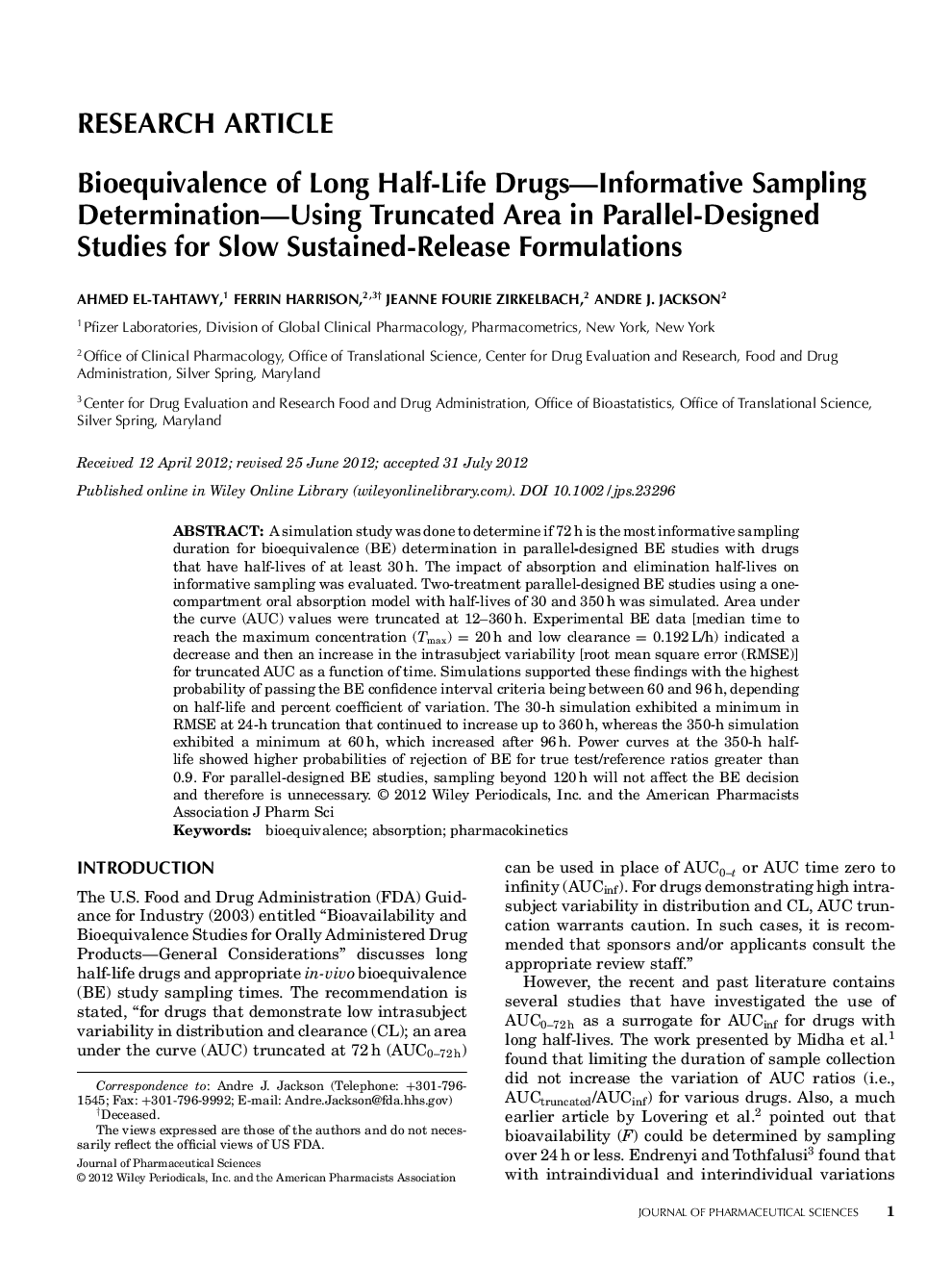| Article ID | Journal | Published Year | Pages | File Type |
|---|---|---|---|---|
| 2485788 | Journal of Pharmaceutical Sciences | 2012 | 10 Pages |
Abstract
A simulation study was done to determine if 72âh is the most informative sampling duration for bioequivalence (BE) determination in paralleldesigned BE studies with drugs that have half-lives of at least 30âh. The impact of absorption and elimination half-lives on informative sampling was evaluated. Two-treatment parallel-designed BE studies using a one-compartment oral absorption model with half-lives of 30 and 350âh was simulated. Area under the curve (AUC) values were truncated at 12-360âh. Experimental BE data [median time to reach the maximum concentration (Tmax) = 20âh and low clearance = 0.192âL/h) indicated a decrease and then an increase in the intrasubject variability [root mean square error (RMSE)] for truncated AUC as a function of time. Simulations supported these findings with the highest probability of passing the BE confidence interval criteria being between 60 and 96âh, depending on half-life and percent coefficient of variation. The 30-h simulation exhibited a minimum in RMSE at 24-h truncation that continued to increase up to 360âh, whereas the 350-h simulation exhibited a minimum at 60âh, which increased after 96âh. Power curves at the 350-h half-life showed higher probabilities of rejection of BE for true test/reference ratios greater than 0.9. For parallel-designed BE studies, sampling beyond 120âh will not affect the BE decision and therefore is unnecessary. © 2012 Wiley Periodicals, Inc. and the American Pharmacists Association J Pharm Sci 101:4337-4346, 2012
Related Topics
Health Sciences
Pharmacology, Toxicology and Pharmaceutical Science
Drug Discovery
Authors
Ahmed El-tahtawy, Ferrin Harrison, Jeanne Fourie Zirkelbach, Andre J. Jackson,
